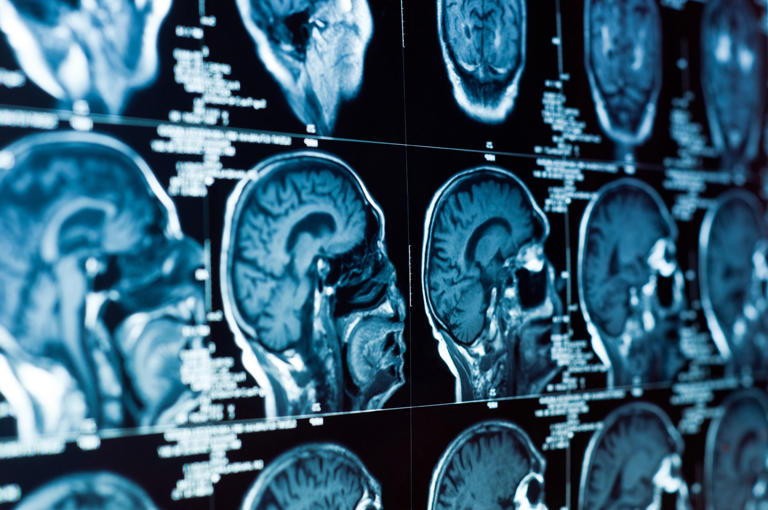







Study assesses links between early negative life events, orbitofrontal cortical thickness and depression in young adults
In a recent study published in the journal JCPP Advances, a group of researchers investigated whether early negative life events (NLEs) predict depressive symptoms in young adulthood through accelerated thinning of the orbitofrontal cortex (OFC) across adolescence. They used a comprehensive longitudinal study designed with four time points.

Background
Childhood and adolescent NLEs, such as accidents, illnesses, and social or academic challenges, can impact brain structure and increase the risk of major depressive disorder (MDD) in adulthood.
While severe NLEs are linked to changes in the OFC, research on the effects of NLEs on cortical thickness (CT) and surface area (SA) is limited. Further research is needed to clarify the complex interactions between early NLE, the development of OFC thickness, and the onset of depressive symptoms in adulthood, particularly considering the limited longitudinal data and mixed findings in current studies.
About the study
The present study included 534 adolescent participants initially enrolled in two sites of the IMAGEN project.
Beginning at 14 years old, these participants were assessed at four different stages: ages 14, 16, 19, and 22. The final sample comprised 321 participants due to dropouts and incomplete questionnaires. The group was predominantly white and from a well-educated backgrounds. Exclusion criteria included serious psychiatric, neurological, or medical conditions.
During the initial testing of participants, a modified form of the Life Events Questionnaire was administered to determine the level of exposure to NLEs. The questionnaire identified 39 potential life events, and participants rated their emotional responses to these events. This method enabled the creation of a score that reflected the severity and impact of NLEs.
Upon final assessment, participants completed the Center for Epidemiologic Studies Depression Scale (CES-D) to evaluate depressive symptoms. This scale focused on the frequency of depressive symptoms experienced in the preceding week.
Magnetic resonance imaging (MRI) scans were conducted at each assessment stage using Siemens Trio 3T whole-body MR tomographs, with various adjustments and updates to the equipment across different sites and time points. The scans captured high-resolution T1-weighted images.
The study focused on the cortical thickness (CT) in the orbitofrontal cortex (OFC), considering its connection to NLEs and depressive symptoms. Image processing and quality control were carefully handled using the FreeSurfer 6.0.0 software and additional manual checks. This careful approach ensured the reliability of the data used in the study.
Statistical analysis was conducted in two primary steps. First, multiple unconditional latent growth curve models (LGCM) were compared to understand changes in OFC thickness over time. The best-fit model was selected based on various statistical criteria.
Secondly, a multiple-mediators model was constructed, introducing depressive symptoms and early NLE into the analysis. This model considered direct and indirect paths between these variables, adjusting sex, site, and emotional symptoms at the initial assessment. The models were processed using Mplus version 8.7, employing full-information maximum likelihood estimation to account for missing data.
Study results
In the present study, a significant proportion of participants reported experiencing at least one early NLE before their initial assessment (319 out of 321, >99%), with the median NLE score being 6.
By the fourth assessment, a majority of these individuals (243 out of 321, approximately 76%) exhibited subclinical levels of depressive symptoms, as indicated by scores below 16 on the CES-D (median = 9). Emotional symptoms, which served as an early indicator of depressive symptoms, showed relatively low scores initially (median = 2).
Individual and mean trajectories displayed largely linear drop through adolescence but with high variation between individuals in OFC thickness. A linear model with a homoscedastic residual structure was determined to be the best fit for modeling longitudinal OFC thinning. This model showed a good fit to the data and indicated an average decrease in OFC thickness across adolescence.
The multiple-mediators model used early NLE as a predictor alongside control variables (sex, site, and emotional symptoms at the first assessment) of the latent intercept and slope for OFC thickness and depressive symptoms, which were regressed upon these growth factors and predictors. This model showed significant direct pathways from early NLE to depressive symptoms in young adulthood but no significant indirect pathways through OFC thickness.
Interestingly, greater baseline OFC thickness and accelerated thinning of the OFC were associated with higher depressive symptoms.
Sex and site also influenced OFC thickness; males had thicker OFC initially compared to females, and participants from Site 2 had a thinner OFC and more pronounced thinning than those from Site 1. However, sex and site did not significantly affect depressive symptoms, and initial emotional symptoms did not influence OFC thickness or depressive symptoms in young adulthood.
- Scientists have finally discovered the cause of morning sickness
- What young children need
- Breakthrough menopause drug that targets key symptom given approval for use in UK
- Keeping your children safe online: All you need to know
- Dear Exhausted and Burnt Out Parents, We’re Here to Help
- How to talk to your kids about death
- Use of menopausal hormone therapy beyond age 65 years and its effects on women's health outcomes by types, routes, and doses
- Scientists debunk myth that human brains are 'underdeveloped' at birth
- What are the health risks to children who vape?
- Changes to skin during menopause explained by experts, including dry skin and acne
- Acting Tips for Kids: How to Engage Your Child Through Theater
- How to nurture creativity in your kids
- Nine things you must consider before adopting a child
- An Overview of Psoriasis in Children
- DIY Fertility Tests Are On The Rise, But How Reliable Are They?
- Dentist shares when children should stop using dummies - or risk bite issues
- Top 10 benefits of breastfeeding
- Reye's syndrome: The illness that affects children
- Diphtheria symptoms: Everything you need to know after case confirmed at UK school
- Children with 'prominent' forehead may in fact be suffering from a dangerous illness
- Study assesses links between early negative life events, orbitofrontal cortical thickness and depression in young adults
- Placenta tumour: My miracle baby gave me cancer
- 7 things to look out for when it comes to vaginal health, according to gynaecologists
- What is the vaginal microbiome?
- What every woman should know about hormones, the pill and cancer
- Home
- Aches and Pains
- Children - Insomnia
- New Born Babies
- Babies From 2-12 months
- Spina Bifida
- Equipment Used
- Drug Abuse
- Other Ingredients
- The Handicapped Child
- Videos
- BALANITIS - Aromachildhood
- Worms
- Corona virus and pregnancy
- Contact Us
- Essential Oils for General Purposes
- The Methods - Aromatherapy - Children-2
- Hydrolats, Essential Oil Waters, and infused Oils
- Ringworm
- The Methods - Aromatherapy - Children- 3
- Basic Care Kit - Children - Essential Oils
- Web Links
- Acne
- Adolescent Acne
- The A - Z of Conditions
- Arthritis (juvenile Rheumatoid)
- Herbal Healing Infused Oils
- Things To Make For Your First Aid Cabinet
- The Cave Man Eating Plan
- The Basic Care Kit For Children
- Verrucas and Warts
- Caring Touch Massage
- The Methods - Aromatherapy - Children
- The Methods - Aromatherapy - Children - 4
- Athlete's Foot - 2
We have 41 guests and no members online






